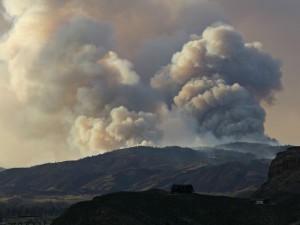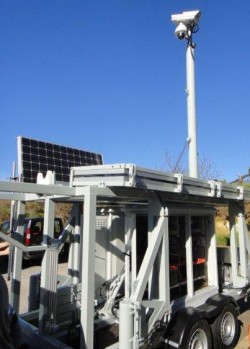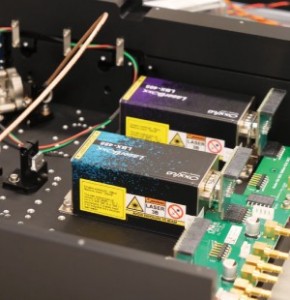
The Forest Fire Finder is a forest fire detector and tracking system that sits on top of a tower and can autonomously detect a fire within five minutes after the fire has ignited. The system, developed in Lisbon, Portugal by NGNS Ingenious Solutions, was developed with the goal of detecting forest fires early in order to deploy fire crews sooner, therefore minimizing their impact.
To protect the 700 km2 of the Peneda-Gerês National Park, the Portuguese government chose the Forest Fire Finder. Thirteen of the systems were installed with optical remote sensors, weather stations and a thermal camera. In case of an alarm, the FFF system provides additional information to the control centers, such as the direction of the fire or exact location. If two systems detect the event, photos of the detected fire and meteorological data, are sent to a central server. From this server, the alerts to other devices are forwarded.

The optical sensor is an Avaspec-ULS2048 spectrometer from Avantes, which is installed next to a video camera, the weather station, a telescope, a processing/controlling unit and a communications unit. The way it works is that the telescope and the video camera perform a scan in a 360° angle every 11 minutes. It also scans at -45 up to 90° degree angles. With two systems working together, 5 minutes is the maximum time between a fire’s ignition and its detection, it also possesses the ability to detect fires up to 15km away.
Through chemical analysis of the atmosphere, the system can recognize organic smoke and distinguish it from other sources (factories, etc.) A sensor collects data on the temperature, humidity, wind direction and speed, and there it also has atmospheric pressure and rainfall sensors. A fibre connected to the telescope brings light to the spectrometer. Spectra collected from the spectrometer are processed and analysed. A video camera takes pictures in an established time interval and it is capable to send real time video as well. The camera is aligned with the telescope, ensuring that what is "seen" is what is analysed.
Triangulation
The system can work in manual or automatic mode. In automatic, when smoke is detected, an alert is sent by an SMS (text) message to one or several pre-selected mobile units. The message says that a fire has been detected and gives its location. This is accomplished through triangulation, with two Forest Fire Finders detecting the same fire. An image may also be sent along with the message. In manual mode, when a fire is detected, the control system issues an alarm. It will wait until the user verifies that there is a fire and the general position. Once the other tower detects the same fire, a triangulation is done and the user receives the exact location. The user can then decide to whom to send alerts, and will continue to track the fire.
The Peneda-Gerês National Park is located in the Norte region of Portugal, in the Gerês mountains. This area has very rocky, rugged and undeveloped land, therefore, four of the nine Forest Fire Finders will be powered by solar and wind, so they don’t need to be connected to the electrical grid. With autonomous operation and messaging system, the Fire Fighter System will be watching over one of Portugal’s most important natural resources.
Written by Anne Fischer, Managing Editor, Novus Light Technologies Today
































 Back to Enlightening Applications
Back to Enlightening Applications



























